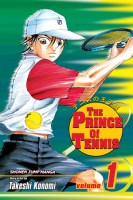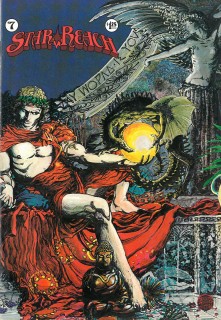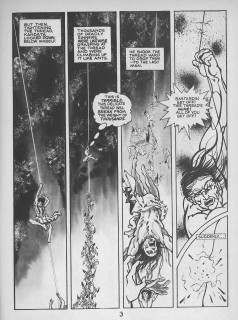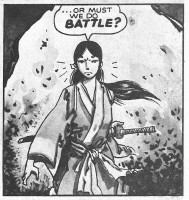 Creator: Jen Lee Quick
Creator: Jen Lee Quick
Publisher: Chromatic Press
ISBN: 9780991946648
Released: August 2014
Original run: 2013-2014
Nearly a decade after the series first began it’s finally here—the third and final volume in Jen Lee Quick’s Off*Beat. The first two graphic novels in the series were published by Tokyopop in 2005 and 2006, but the planned third volume never materialized and the first two volumes went out of print. For years fans were left languishing with one heck of a cliffhanger and with little hope of ever seeing the ending of Off*Beat. But then along comes a brand new publisher, Chromatic Press, to save the series, reprinting new editions of the first two volumes in 2013 and serializing the third in its digital multimedia magazine Sparkler Monthly. Off*Beat, Volume 3 made its debut in the first issue of Sparkler Monthly in 2013, reaching its conclusion in the ninth issue in 2014. The collected print edition of Off*Beat, Volume 3, which includes additional material not serialized online, was published later in 2014. As a long time fan of Off*Beat, I am absolutely thrilled to finally have the completed series.
With the next stage of the Gaia Project about to begin, Colin must make a decision. He knows that Tory has been spying on him—he even has one of Tory’s many notebooks recording his activities as proof—and despite Colin being drawn to the other young man, Tory seems to be lacking the attunement that Colin is hoping to find in another person. Though somewhat reluctant, Colin is preparing himself to end his strange relationship with Tory. As for Tory, what started out as a dubious obsession with his neighbor has grown into genuine affection. Although he is still intensely curious about the top-secret Gaia Project, he has begun to care less and less about it and more and more about Colin. He can’t seem to help himself. And so when Colin disappears without a word, Tory momentarily finds himself at a loss before applying all of his investigative skills into searching for him. He has very few clues to work with, but if nothing else Tory is meticulous and determined.
I really love the slow, natural development of Tory and Colin’s awkward relationship over the course of Off*Beat. It takes them all three volumes to recognize and come to terms with their complicated feelings for each other and matters are made even more difficult by Colin’s peculiar circumstances. They both have to figure out what to do about Colin’s devotion to the Gaia Project and how that will impact their budding relationship. One of the things that is never called into question in Off*Beat is the legitimacy of Colin and Tory’s liking each other—something about the series that makes me extraordinarily happy. If the two young men can somehow find a way to make their relationship work despite the strangeness of their situation, they have the ready support of family, friends, and classmates. That they would even be interested in another person romantically is what the drama stems from; a big deal is never made over the fact that they both happen to be guys. Their close relationships with the other characters in the series are another very important part of Off*Beat as well.
Off*Beat reaches a very satisfying conclusion with the third volume and yet at the same time it is open-ended enough that readers are left imagining all of the possibilities presented by the last few pages. Quick’s ending, like real life, is messy and complicated, but most of the plot threads are tied up in some fashion. Which is not to say that all of the questions have been answered—more has been revealed about the Gaia Project, but there is still plenty about it and about Colin himself that remains hidden and unknown even by the series’ end. The needed speculation may frustrate some readers, but I found it to be a believable and engaging aspect of the story. Despite all of the curious mysteries and top-secret projects, the characters’ relationships and feelings are both realistic and authentic. They all have their quirks, flaws, and strengths. It’s this beautifully strong human element in Off*Beat that really makes the series work. With the final volume of Off*Beat I find that I love the series more than ever. I am so incredibly happy to have finally been able to see the completion of such a wonderful story.









